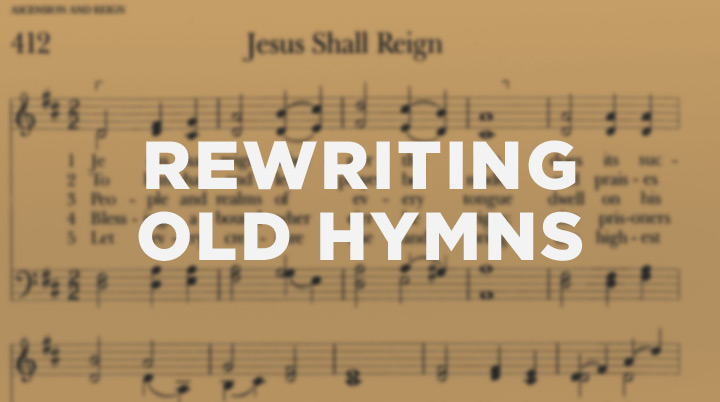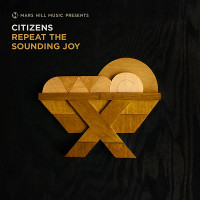Latest
-
Objections to the Christian Faith from the Unchurched and De-Churched
 Tue Dec 02, 2014
Tue Dec 02, 2014
by Resurgence -
Craig Groeschel: We Innovate for Jesus
 Tue Oct 14, 2014
Tue Oct 14, 2014
by Resurgence -
Mark Driscoll: Revelation
 Tue Oct 07, 2014
Tue Oct 07, 2014
by Resurgence -
RESURGENCE LEADERSHIP #034: JOHN PIPER, WHY I TRUST THE SCRIPTURES, PART 2
 Tue Sep 30, 2014
Tue Sep 30, 2014
by Resurgence -
Resurgence Leadership #033: John Piper, Why I Trust the Scriptures, Part 1
 Tue Sep 23, 2014
Tue Sep 23, 2014
by Resurgence

Archives
Rewriting old hymns for a new generation

At Mars Hill, we sing a lot of hymns, and we especially love to rewrite hymns that have been lost in time or are beginning to fade away.
A middle-aged Dutchman sits motionless in front of a giant pipe organ tucked into the corner of some medieval cathedral.
Is he lost in thought?
Asleep?
Perhaps praying?
Finally, after a period of time, he sets his hands to the keys, playing a barrage of quickly moving but cumbersome chords on this arcane artifact, and he begins to sing.
After two stanzas of a meandering and seemingly random melody, I decide to reach forward and hit the space bar, pausing my third YouTube attempt to learn this hymn, and think to myself, “I couldn’t sing that tune back if my life depended on it.”
This is the moment when you know it’s time to rewrite a hymn.
While the text has and will stand the test of time, the melody lost that fight long ago.
Come and Stand Amazed
At Mars Hill, we sing a lot of hymns, and we especially love to rewrite hymns that have been lost in time or are beginning to fade away. I’d like to share some tips for thinking through the questions of why and how to rewrite a hymn, using a recent example from the new Citizens Christmas EP, Repeat the Sounding Joy.
This year I got the opportunity to write a new melody to what I believe just might be the best lyric ever written about the incarnation of Jesus. The hymn is a medieval Dutch carol called “Come and Stand Amazed You People,” and it was translated to English by Klaas Hart in the 20th century.
The translation is gorgeous and cleaves to the heart of the beauty of what it means that God became man and died for his people. The problem is that while the text has and will stand the test of time, the melody lost that fight long ago. While there are some older melodies that stand firm with a stately simplicity, there are many more that simply do not transfer gracefully to our modern musical sensibilities. This hymn was such a song. It would have been a train wreck to try to teach this song to my congregation when I couldn’t even remember it myself after hearing it a few times.
“I couldn’t sing that tune back if my life depended on it.”
So I decided to write a new melody that would be memorable and would match the movement and mood of the lyrics, and then had the privilege of watching Brian Eichelberger and Zach Bolen, with the rest of the Citizens band, take my melody and build it into an amazing arrangement for their EP. Nobody I knew had ever even heard this song, let alone sung it—now it has a whole new life, and a new generation can sing and savor its heady and humbling truths.
Tips for rewriting a hymn
If you are interested in rewriting a hymn yourself, here are a couple of pointers.
If it’s already a well-known standard that is already easily adaptable to a variety of styles (like “Come Thou Fount” or “Be Thou My Vision”), it might be best to leave it alone, since there are relatively few that fit into this category.
Some other good reasons to update a hymn, besides a meandering melody, could be:
- The mood feels cheesy and flippant to modern ears (such as “I Sing the Mighty Power of God,” which was rewritten by Mars Hill’s own Pastor Tim Smith).
- The melody severely limits the ability to adapt the hymn to your church context.
- The movement is awkward and stilted when put to any modern musical format.
There is a lot of freedom, and there are tons of hymns that have been standards but are now sinking into oblivion.
Go, dig deep, dust off the old hymnals, and find some diamonds in the rough. Polish them off and let their brilliance reflect the light of Christ to the world—especially in your community.
 Stream “Come and Stand Amazed” for free on Citizens’ new Christmas EP, Repeat the Sounding Joy.
Stream “Come and Stand Amazed” for free on Citizens’ new Christmas EP, Repeat the Sounding Joy.